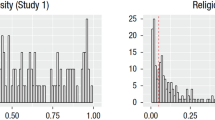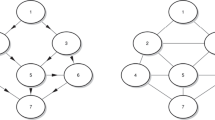Abstract
In this paper, we analyze a specific class of principal-agent models which seems to be sufficiently general to cover applications in environmental economics with upstream-downstream problems as an example. In our basic model, the observation outcome is ann-dimensional random vectorx and only the first and second moments ofx are common knowledge. We study the effects of random sampling in the presence of costly signals. For this purpose, we assume that the principal and the agent use a simple statistical procedure, i.e. their contract will be based on the mean of a random sample with sampling costs dependent on the sample size. It is shown that there exists an optimal sample size. We investigate the relationship between the optimal sample size, the marginal sampling costs, and the agent's risk aversion.
Similar content being viewed by others
References
K.J. Arrow, The economics of agency, in:Principals and Agents, ed. J.W. Pratt and R.J. Zeckhauser (Boston, 1985) pp. 37–51.
G. Bamberg, Rish sharing and subcontracting, in:Agency Theory, Information, and Incentives, ed. G. Bamberg and K. Spremann (Heidelberg, 1987) pp. 61–79.
G. Bamberg and K. Spremann, Implications of constant risk aversion, Zeits. Oper. Res. 25(1981) 205–224.
J.F. Bard, Convex two-level optimization, Math. Progr., Ser. A, 40(1988)15–27.
S.J. Grossman and O.D. Hart, An analysis of the principal-agent problem, Econometrica 51(1983) 7–45.
O. Hart and B. Holmström, The theory of contracts, in:Advances in Economics, ed. F. Bewley Truman (Cambridge, 1987) chapter 3.
R.A. Horn and C.A. Johnson,Matrix Analysis (Cambridge University Press, Cambridge, 1985).
H. Milde, Managerial contracting with public and private information, in:Agency Theory, Information, and Incentives, ed. G. Bamberg and K. Spremann (Heidelberg, 1987) pp. 39–59.
U. Schweizer, Externalities and the Coase theorem: Hypothesis or result?, J. Inst. Theor. Econ. 144/2(1988)245–266.
S. Shavell, Risk sharing and incentives in the principal and agent relationship, Bell J. Econ. 10(1979)55–73.
K. Spremann, Agent and principal, in:Agency Theory, Inforation, and Incentives, ed. G. Bamberg and K. Spremann (Heidelberg, 1987) pp. 3–37.
W.J. Ströbele, The economics of negotiations on water quality — an application of principal agent theory, in:Conflicts and Cooperation in Managing Environmental Resources, ed. R. Pethig (Springer, 1992) pp. 221–236.
Author information
Authors and Affiliations
Rights and permissions
About this article
Cite this article
Stahlecker, P., Ströbele, W. Random sampling within the framework of a multivariate principal-agent approach. Ann Oper Res 54, 39–56 (1994). https://doi.org/10.1007/BF02031726
Issue Date:
DOI: https://doi.org/10.1007/BF02031726




